Art World
Lisbon’s MAAT Museum Heralds New Era for Contemporary Art in Portugal
Its director, Pedro Gadanho, was previously curator at MoMA’s architecture department.
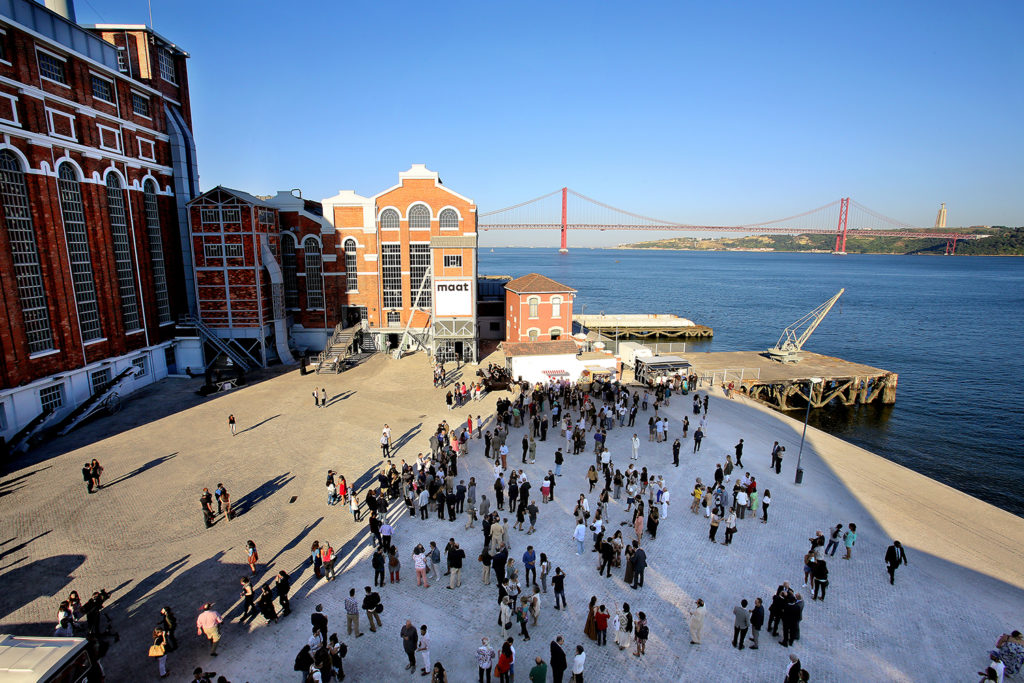
Its director, Pedro Gadanho, was previously curator at MoMA’s architecture department.

Hettie Judah

As a sparkling new building is unveiled for the Museum of Art, Architecture and Technology in Lisbon, Artistic Director Pedro Gadanho introduces a sharply conceived exhibition program.
MAAT’s VIP opening on Sunday night inaugurated a four-day-long celebration, which culminates in the official grand opening for the city’s residents tomorrow. The focus of festivities is the sparkling white Amanda Levete Architects-designed building that swoops low and lusciously curving along the edge of the Tagus River in Belém.
Together with the existing Central Tejo building—housed in a former power station—it will give MAAT eight flexible spaces for a shifting program of projects and exhibitions.
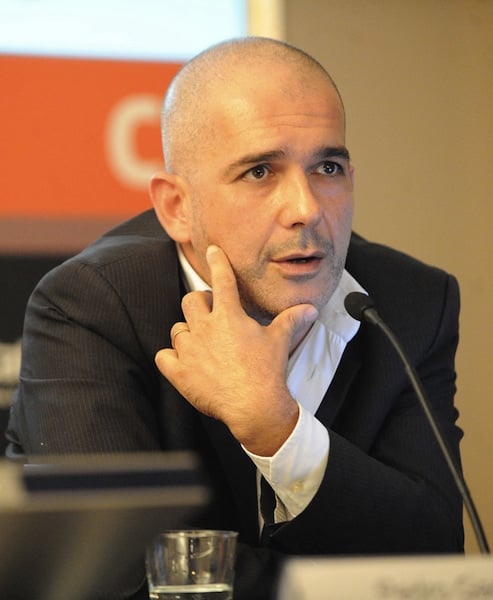
Pedro Gadanho, director of the MAAT museum in Lisbon. Photo ©David Farran.
Gadanho came to MAAT hot off a four-year curatorial stint at MoMA’s architecture department. His initial training as an architect diverted into postgraduate studies in Art and Architecture, pitching Gadanho from the black-clad echelons of the architecture community into the grassroots of Lisbon’s arts world. As a result, his knowledge of the city’s creative scene and boisterous notions of how to stimulate it are compelling.
“One of the complaints that I used to hear from people was that when they came to Lisbon, they didn’t know where they could see Portuguese artists and their work,” Gadanho explained, nodding toward (of course) Hans Ulrich Obrist as one source of the said complaint. One of his roles, thus, will be to maintain balance between travelling exhibitions, commissions from major international artists, and exhibitions dedicated to art from Portugal, whether by early career artists or established names.
MAAT will nurture Portuguese curatorial talents as well as new work. “All the young curators working in Portugal left!” explains Ines Grosso, who, together with Ana Anacleto forms Gadanho’s in-house curatorial team. “We have many spaces, so we need a lot of curators.” Grosso herself comes fresh from a four-year stint at Inhotim, which has fired her with enthusiasm for works by artists from Brazil and Latin America, as well as relish for the long, involved working practice that comes with large-scale complex commissions.
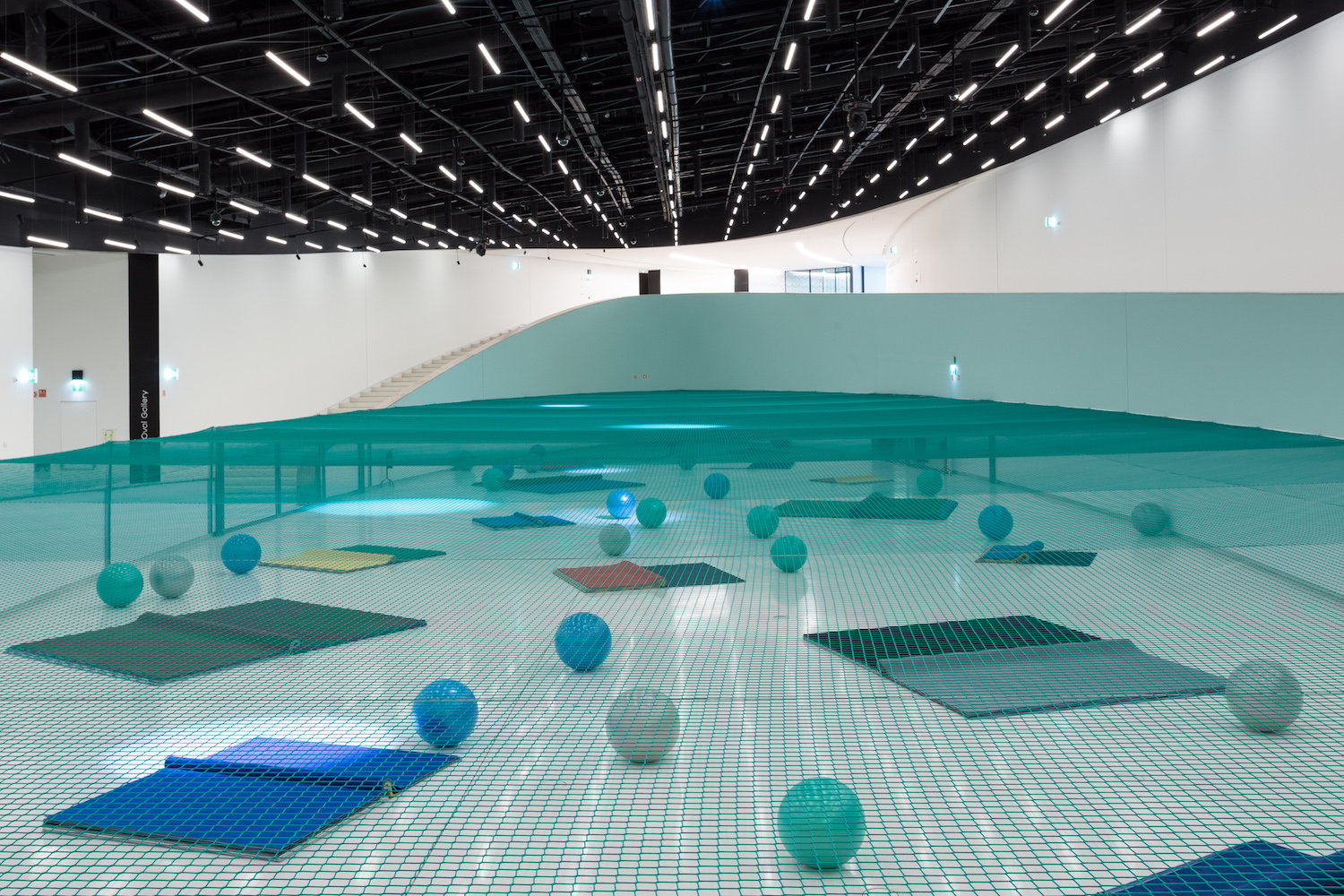
Dominique Gonzalez-Foerster, Pynchon Park. Photo Bruno Lopes.
Such commissions will be the most visible (and visited) part of MAAT’s programming. Immediately below the entrance of the new building, and visible from a long walkway that curves around its edge, is the 1000 square meter Oval gallery. As with the Turbine Hall of Tate Modern, the Oval will host site-specific commissions and adapted works, and will remain unticketed. Dominique Gonzalez-Foerster’s Pynchon Park—a human zoo dressed with brightly coloured exercise balls and polychrome book-shapes stitched from sheets of carpeting—is the inaugural commission.
With lighting adjusted to cycle through an artificial night and day over the course of 24-minutes, and meshed gates that randomly locked and unlocked, Pynchon Park established MAAT’s underlying territory of interest: the conceptual interplay between art, architecture, and technology.
“There are sections of contemporary art that approach art from a contemplative perspective,” says Gadanho. “For me it’s more important as a critical device to trigger reflection on our current situation… In the program, we use architecture and technology as a way of focusing certain aspects within contemporary art.”
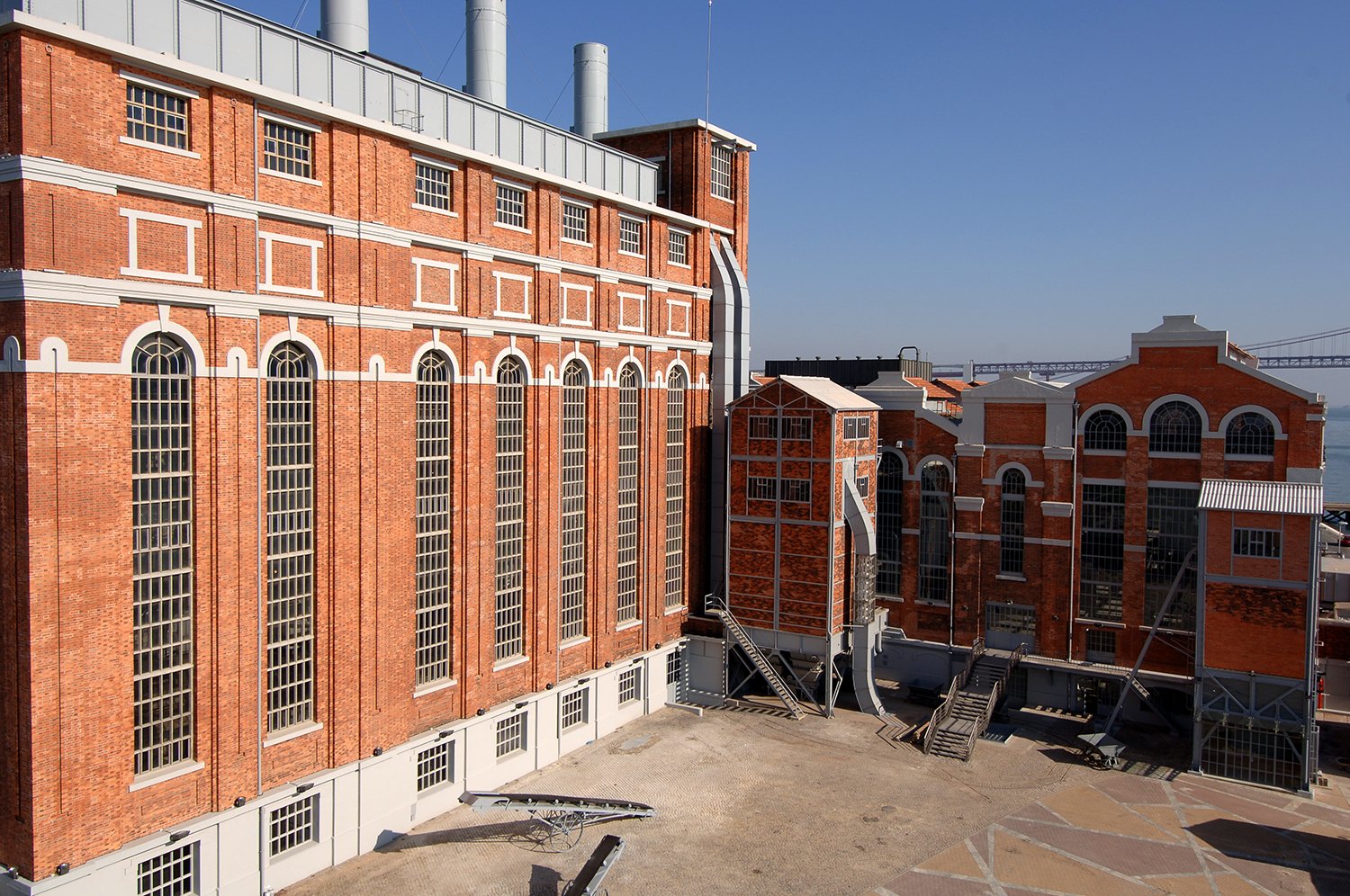
MAAT Central Tejo Photo ©EDP Foundation.
Entirely funded by the EDP Foundation—the philanthropic arm of Portugal’s electricity supplier, and the largest company in the country—the structural and technological edge to MAAT’s art programming has an evident root. Until June of this year, Central Tejo was a museum of electricity, and the building still houses educational displays and mannequins posed shovelling coal into the old boilers in the basement.
Gadanho’s desire to disrupt the site’s didactic overtones is evident from the current show in the adjacent Project Space. Edgar Martin’s Siloquies and Soliloquies on Death Life and other Interludes, combines scanned photograph and text from the old archives of Lisbon’s INMLCF pathology facility with the artist’s own photographs, and texts purloined from other sources. The result is one of creeping suggestion, with a constant overtone of violent death souring even the most apparently innocent image.
On the ground floor of Central Tejo, one principle gallery will draw on the EDP Foundation’s collections of Portuguese contemporary art, alternating group shows with mid career surveys. The collection has been acquired only over the last decade, and includes some 1,000 works dating from the 1960s to the present day. Acquisition is ongoing, and will be integrated with the curatorial strategy for each show.
Second Nature, the opening exhibition, includes new acquisitions from Alberto Carneiro and Gabriela Albergaria, and explores the tension between nature and culture, whether in the tradition of landscape painting, the decorative use of nature themes, or manipulation of plants in the creation of gardens. Highlights included João Grama’s ultra-dark photographs of illegal trapping devices (Ovício da Terra, 2015/16); and Manuela Bapstista’s Falesia 2 (1968-70), a slice of fibreglass mountainside coloured artificial yellow.
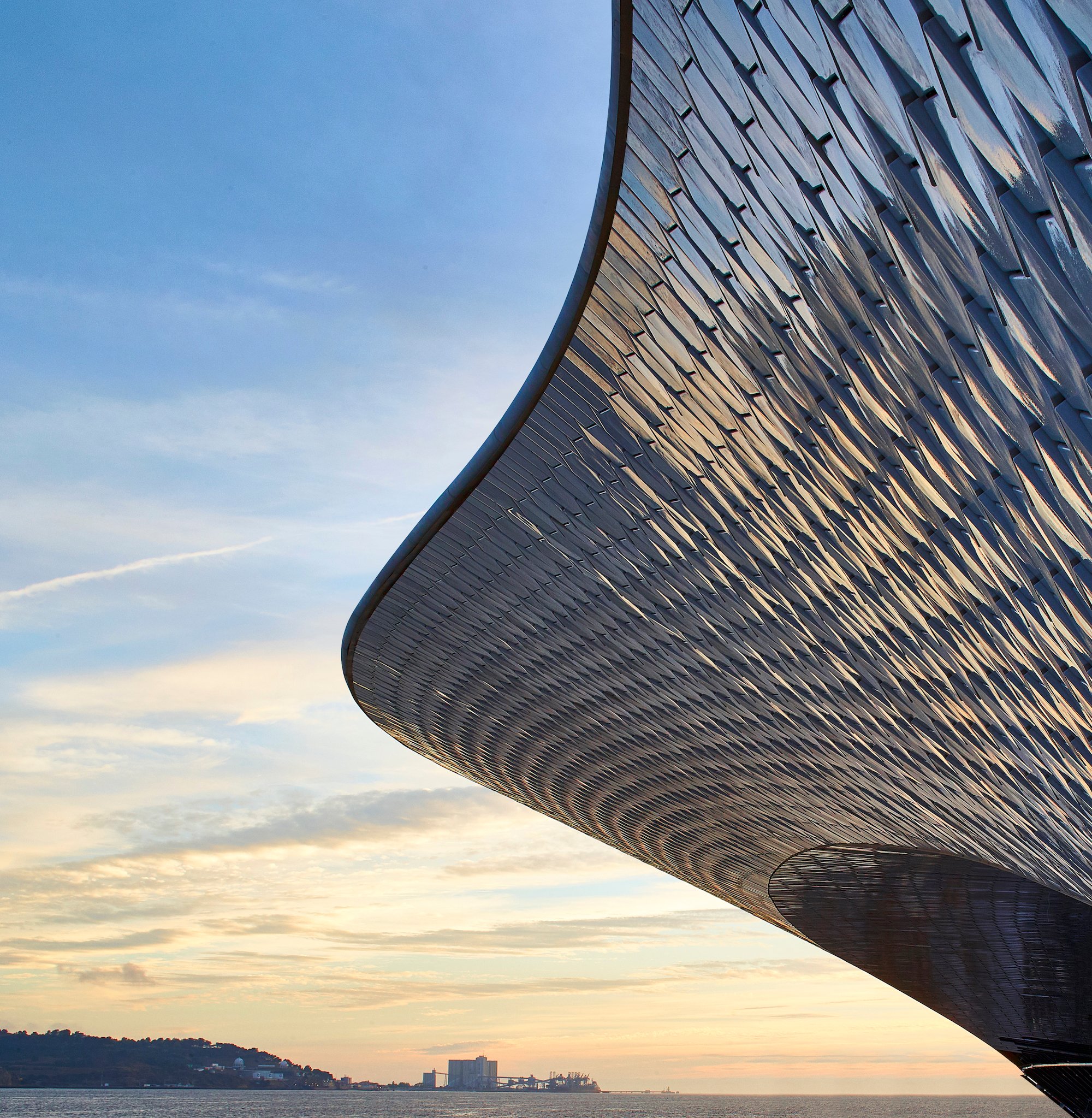
MAAT kunsthalle. Photo ©Hufton+Crow.
During its opening week, MAAT’s new building will host performances and temporary works by artists and musicians including Semiconductor, Haroon Mirza, Ryoji Ikeda, Zebra Katz, and Von Calhau. The program proper will kick off in March 2017 with the large group exhibition Utopia/Dystopia part II curated by Gadanho alongside João Laia (responsible for Hyperconnected, the standout show of this year’s Moscow Young Art Biennial) and Susana Ventura. The wide-ranging show will feature architectural projects from Archigram, Yona Friedman, and Rem Koolhaas alongside the work of artists such as Cyprien Gaillard and Hito Steyerl.
One could enthuse at length about the site, the buildings, and the beauty of the evening light, but what makes MAAT exciting right now is Gadanho and his team. At first encounter, they make for a blistering combination: a fierce and uncompromising curatorial vision with the intimate knowledge of an underexposed local scene with which to make it happen.
The MAAT museum opens to the public tomorrow in Lisbon.